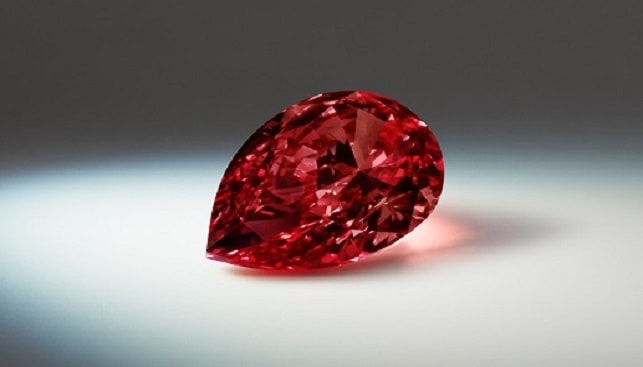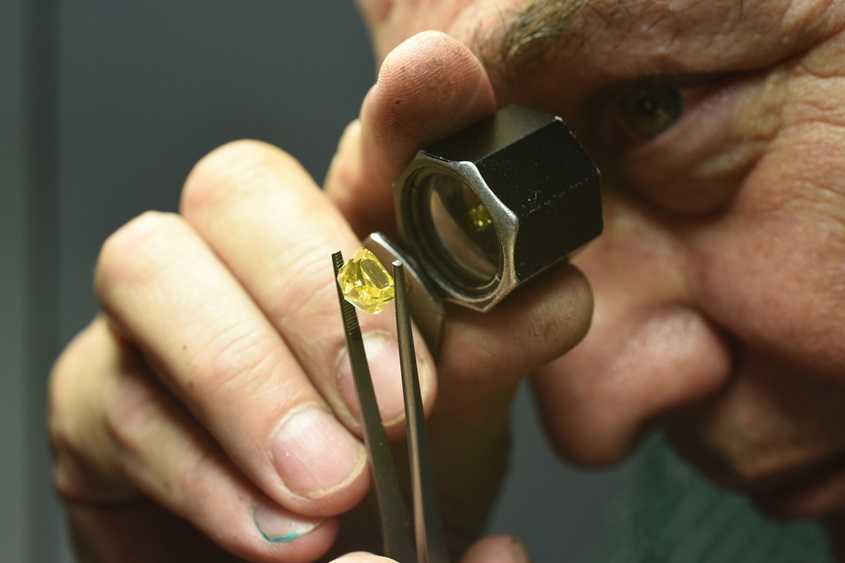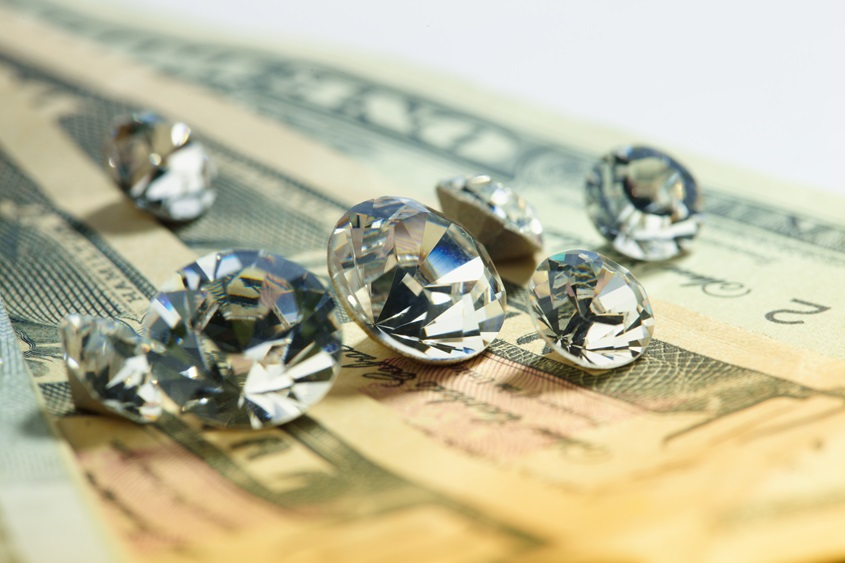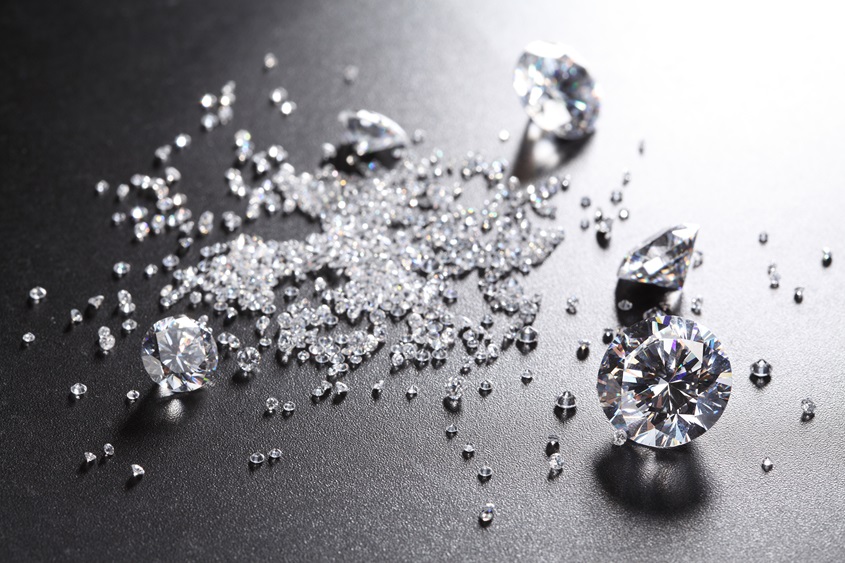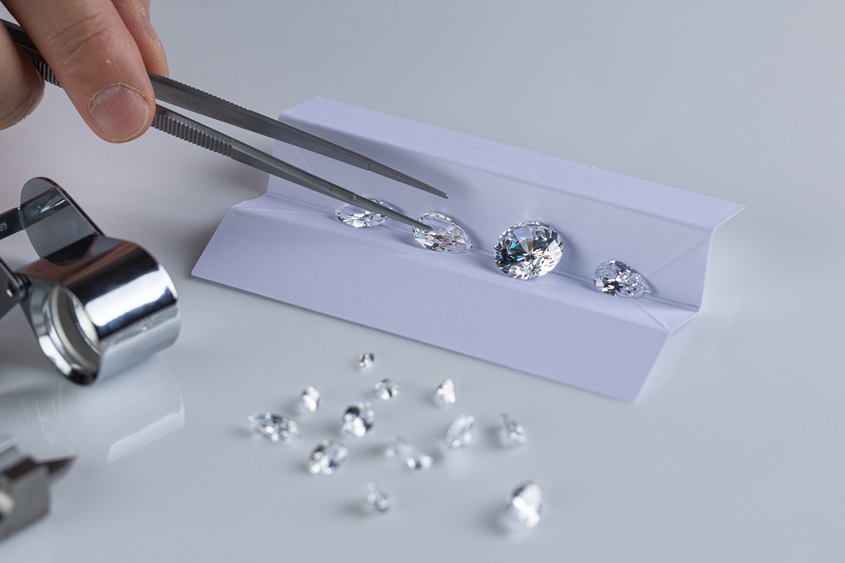The Princess shape – a relative newcomer among diamond cuts, having been invented in the 1960s – is the second most popular diamond shape after the round brilliant. In fact, Princess shaped diamonds feature the same fire and brilliance as round diamonds and are sometimes known as “square modified brilliants.”
The originator of the Princess shape is generally regarded as London jeweler Arpad Nagy, although the shape he developed is now known as the Profile Cut, and the Princess shape has become a generic term for square-shaped brilliants.
The Princess features a square or rectangular crown, pointed corners, and beveled sides. The number of facets can vary from 49 to 78, depending on the size and shape of the stone, and there is currently no consensus in the diamond industry as to what facet patterns or proportions constitute the “ideal” Princess shape. Princess shaped diamonds are available with a length-to-width proportion of 1.0 to 1.05 – a perfect or near-perfect square; 1.1 – just slightly elongated; or 1.2 – a wide rectangle. Depth percentage can range from 70% to 78%.
Perhaps the best-known of the straight-edged diamond cuts and a favorite choice for diamond solitaire rings, especially engagement rings, Princess shaped stones generally retain some 30-40% more of the rough diamond than round brilliants of the same weight. This makes them slightly less expensive than rounds since less diamond has been “lost” in the cutting process.
While some diamond shapes are used for stones of all clarity grades, Princess shaped diamonds are generally cut from rough stones with a high grade of clarity, a quality that is carried through the cutting and polishing stages. Customers looking for a lower-grade diamond will have difficulty finding one in the Princess shape.




